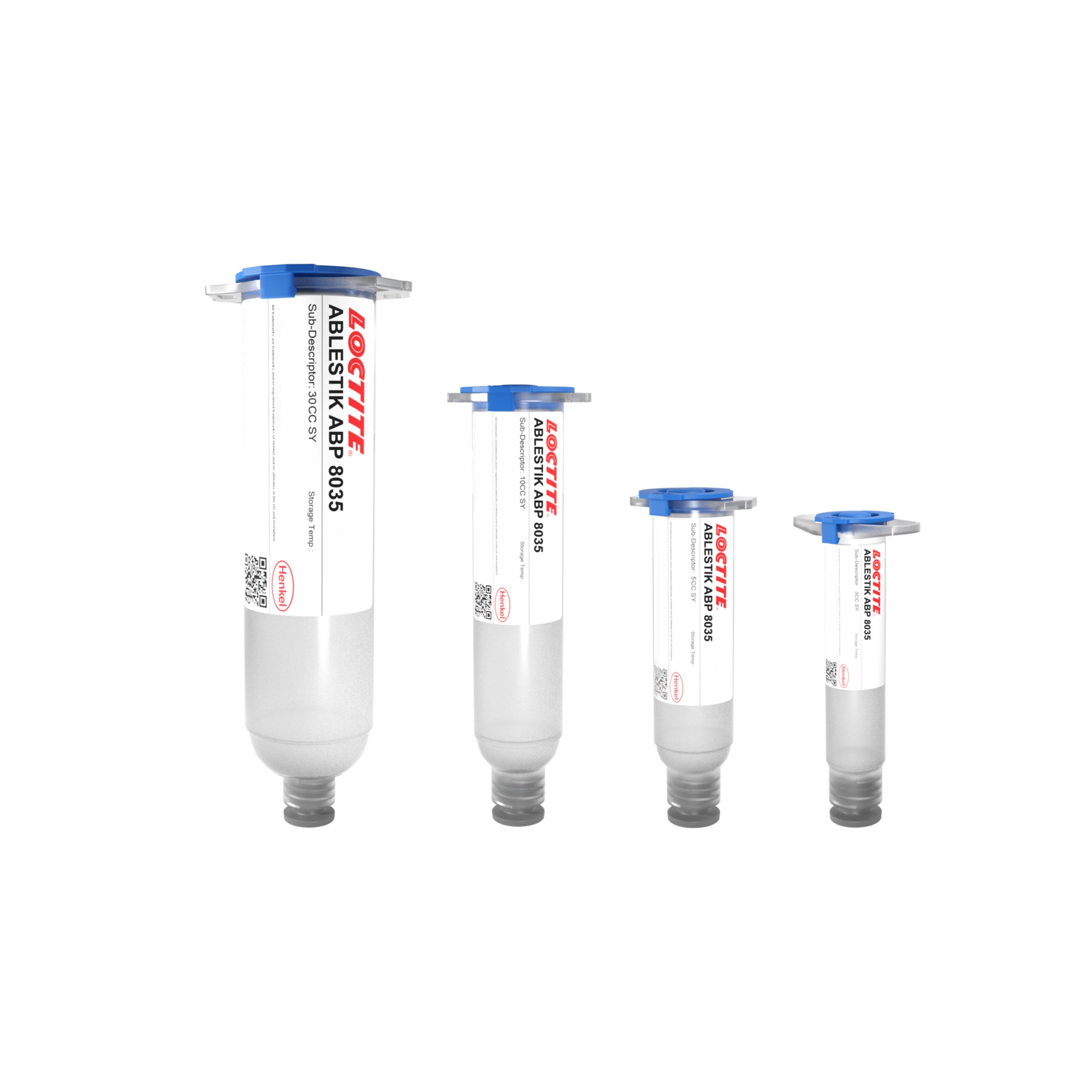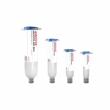LOCTITE ABLESTIK ABP 8035
Harmonization Code : 3506.10.00.00 | Prepared glues and other prepared adhesives, not elsewhere specified or included; products suitable for use as glues or adhesives, put up for retail sale as glues or adhesives, not exceeding a net weight of 1 kg
Main features
- Heat cure
- Transparent liquid
- LED applications
Product Description
LOCTITE ABLESTIK ABP 8035 silicone adhesive is designed to provide excellent adhesion specially at wirebonding temperature, minimizing failure rate at assembly. This adhesive is ideal for applicatioN via automatic dispense or pin-transfer technology.
LOCTITE ABLESTIK ABP 8035 is a colorless transparent liquid with good adhesion at high temperatures. It has good anti yellowing properties and exhibits a high level of heat and UV resistance. This die attach adhesive is typically used for high brightness LED applications. This product has been replaced by LOCTITE ABLESTIK ABP 8035M.
Cure Schedule
- 1 hour @ 150°C or
- 1 hour @ 175 °C
Technical Specifications
| General Properties | |||||
| |||||
| |||||
| Work life @25°C Work life @25°C Work life is the amount of time we have to work with a material until it is no longer able to be easily worked and applied on a substrate. It is based on the change in viscosity and it can rely on the application requirements. | 24 hours | ||||
| Physical Properties | |||||
| Viscosity Viscosity Viscosity is a measurement of a fluid’s resistance to flow. Viscosity is commonly measured in centiPoise (cP). One cP is defined as the viscosity of water and all other viscosities are derived from this base. MPa is another common unit with a 1:1 conversion to cP. A product like honey would have a much higher viscosity -around 10,000 cPs- compared to water. As a result, honey would flow much slower out of a tipped glass than water would. The viscosity of a material can be decreased with an increase in temperature in order to better suit an application | 7,880 mPa.s | ||||
| Mechanical Properties | |||||
| |||||
| Thermal Properties | |||||
| |||||
| Glass Transition Temperature (Tg) Glass Transition Temperature (Tg) The glass transition temperature for organic adhesives is a temperature region where the polymers change from glassy and brittle to soft and rubbery. Increasing the temperature further continues the softening process as the viscosity drops too. Temperatures between the glass transition temperature and below the decomposition point of the adhesive are the best region for bonding. The glass-transition temperature Tg of a material characterizes the range of temperatures over which this glass transition occurs. | -56 °C | ||||
| Thermal Conductivity Thermal Conductivity Thermal conductivity describes the ability of a material to conduct heat. It is required by power packages in order to dissipate heat and maintain stable electrical performance. Thermal conductivity units are [W/(m K)] in the SI system and [Btu/(hr ft °F)] in the Imperial system. | 0.2 W/m.K | ||||



